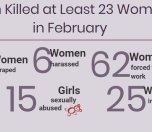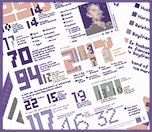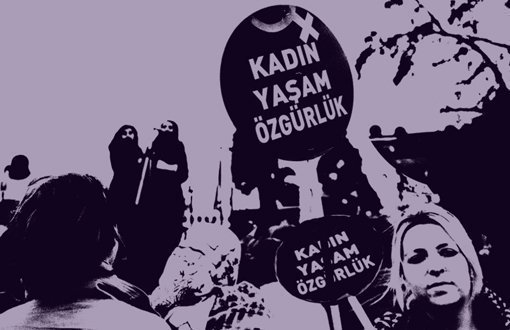Men Kill at Least 25 Women in February
.jpg)
Click to read the article in Turkish / Kurdish
According to news reports bianet compiled from local and national newspapers, news sites and agencies, men killed at least 25 women and two girls; raped at least nine women; harassed 18 women; sexually harassed 18 girls; injured 26 women in February.
11 percent of the 98 violence/murder cases against women and girls covered by the media targeted immigrant/refugee women.
In addition to 25 femicides recorded in the tally:
A gay man was killed in hate murder in Karabük. Two hate murders were reported in the media in 2018.
One girl and two women claimed to commit suicide.
One woman attempted suicide one day before the hearing of a police officer, who raped her and was tried without arrest. The defendant police officer acquitted in this hearing.
One woman was killed by her throat being cut. The perpetrator is yet to be identified.
Three women were found suspiciously dead. Investigation into the murders continues.
Murder
Men killed at least 25 women and two men near them in February.
36 percent of the women were killed for attempting to divorce/break up, 8 percent were killed by men whom their other women friends attempted to break up/divorce.
One murder was committed despite protective order. One woman had applied to extend the period of protective order that expired two days ago.
12 percent of the murdered women were refugee/immigrant.
56 percent of the women were murdered by their husbands.
13 women were killed by their husband of official marriage; one by husband of religious marriage; one by a man whose marriage proposal was rejected by her elder sister; one by a man whose marriage proposal was rejected by her daughter; one by a relative; three by ex-husband; one by ex-boyfriend; one by a manager at the workplace; one by her father-in-law; one by her husband’s brother; one by rapist.
Firearms were used in 64 percent of the murders.
Five women were killed with knife; two by being choked; one by her throat being cut; three with gun; 13 with rifle. Murder of method wasn’t specified in one incident.
The cities where murder occurred are Adana (1), Ankara (2), Antalya (2), Balıkesir (2), Batman (1), Çorum (1), Denizli (1), Düzce (1), Iğdır (1), Isparta (1), İstanbul (4), Kars (1), Kayseri (1), Kırıkkale (1), Konya (1), Muğla (1), Osmaniye (1), Van (1) and Zonguldak (1).
Child killings
Men killed two girls and one boy in February.
Two children were killed with rifle, one other was battered to death.
The incidents occurred in Balıkesir, Denizli and Kocali. In these three incidents, one of the children’s mother was killed; one’s mother was heavily injured, and the other one’s mother committed suicide.
Rape
Men raped at least nine women in February.
Two of the raped women were with disabilities, two others were immigrants. One of the women with disabilities being subjected to systematic rape came to light after it was realized that she was pregnant of 5.5 months.
Three of the women were raped by male strangers; one by a coworker; one by her sister’s husband and one by her boyfriend. Identity of one rapist was not reported in the media.
Two of the rape incidents occurred in forestry areas where they were taken to by force; one at a home where the woman was seized; one in a toilet of an entertainment venue; three at the women’s homes and one in an elevator.
|
Legal proceeding: Only five of the 40 rape perpetrators were arrested. Five perpetrators were detained; another one was being searched. The legal proceedings about the other 29 perpetrators weren't covered by the media. |
Sex work by force
147 women were forced to sex in Samsun, Ankara and İstanbul. Six of them were citizens of Ukraine, Moldova, Kyrgyzstan and Turkmenistan.
|
Legal proceeding: 49 people who forced the women to sex work were detained. One of the perpetrators was released on probation and legal proceedings about the other 48 perpetrators weren't reported in the media. |
Child abuse
18 abuse incidents against girls were reported in the media. One girl got pregnant.
39 percent of the abuse incidents occurred at and around schools.
One child was abused by her relative; one by her father; one by a grocer; one by a doctor; one by a primary school principal; one by her neighbor; one by men whom she knew from neighborhood/village; two by male cleaning workers at school; one by a manager of the company where she was doing intern; five by male strangers. Identities of the two perpetrators weren’t reported in the media.
|
Legal proceeding: * Only 12 of the 38 perpetrators were arrested. Of the other 26 perpetrators: * 15 were released after being detained * Two were released on probation. * Four were detained but the following process wasn’t reported in the media. * One was only discharged from school. The principal who told the abused children “you shouldn’t have worn tight clothes” was discharged but no legal action was taken. * A doctor who abused a child during medical examination took annual leave and judicial and administrative investigation was launched. * Prosecutor’s office launched an investigation against a teacher. No other information was reported in the media. * A manager who sexually abused his intern was retired for attempting to cover the incident. He was detained in the wake of criminal complaint by Provincial National Education Directorate. |
Harassment
In February, news regarding harassment of at least 18 women were reported in the media.
55 percent of women were harassed by male strangers.
10 women were harassed by male strangers; one woman by a man that she had met on social media; one woman by a man whose relationship proposal she had declined; two women by their male colleagues; one woman by her manager at the workplace; one woman by a director at the immigration authority and one woman by her domestic employer.
Two women were subjected to harassment in traffic, one woman to digital harassment and one woman to stalking. One man stole the underwear of a woman that he did not know and one man made the video recordings of a woman with a hidden camera. Other incidents occurred as verbal and/or physical harassment.
One of the women subjected to harassment was from Syria and one was from Egypt.
Judicial process:
Only 6 of the 16 harassers were arrested on the charge of harassment.
While two harassers were released on the charge of harassment, one of them was arrested on the charge of bodily harm and one was arrested for having insulted the President.
Two men were released after being detained on the charge of harassment, a lawsuit was filed against only one of them.
One harasser was sentenced to penalty. A suspension decision was released for another harasser.
Even though an investigation has been launched against a civil servant working at the Turkish Grand National Assembly for systematically harassing an intern, he is still on duty.
A man who continued to harass the victim of the lawsuit where he was tried for harassment was taken into custody.
The process after other two harassers were taken into custody was not reported in the press.
Violence - injury
In February, men inflicted violence/injury on at least 26 women. Of these 26 women, at least two were severely injured.
23 of women were subjected to violence because they demanded divorce/separation.
Eight percent of violence - injury incidents happened despite an injunction for protection.
61 percent of women were subjected to violence by their husbands or partners.
One woman was injured by a relative of hers; one woman by her father; one woman by her ex-husband; 12 women by their husbands; one woman by a minibus driver; four women by their partners; one woman by a male acquaintance/friend of hers and five women by male strangers.
31 percent of the violence - injury incidents took place in public spaces (streets, bus stops, bus terminals).
15 percent of the women who were subjected to violence were refugees.
Violence directed against refugee women
In the male violence monitoring report of bianet for February 2018, there are 11 migrant/refugee women who were subjected to murder, harassment, rape and violence.
* In Antalya and İstanbul, men murdered two women from Syria and one woman from Kyrgyzstan.
* In Antalya and Konya, men harassed one woman from Syria and one woman from Egypt. One of the harassers was working as a director at the Immigration Authority.
* Two women who were not from Turkey were raped in İstanbul and Antalya. One of the women was reported to be from Kyrgyzstan. The media also reported that the other woman was from "Gulf countries."
* In Antep, İstanbul and Kocaeli, two women from Syria, one woman from Morocco and one woman from Uzbekistan were injured due to male violence.
The above violence incidents appear in the categories of male violence monitoring reports prepared by bianet. (For instance, 3 refugee women who were murdered in February are among the 25 femicides that we have reported.) However, seeing that the number of women who had to settle in Turkey due to war or economic hardships has gradually increased in the male violence monitoring reports, we want to attract attention to this situation by dedicating a special heading to this subject.
ExplanationThe bianet Male Violence Monitoring Report only covers women who lost their lives as a result of male violence. We do not take include any violence cases or crimes that are not gender-based. Throughout the year, we keep track of unidentified murders and suspicious deaths of women in separate monthly tallies but do not add them to the number presented in the headline. At the end of the year, we examine these cases of unidentified murders and suspicious deaths to determine whether the crimes were gender-based. In time, when we come to the conclusion that a crime is gender-base, we include it in the end-of-year tally. We do not include any murders in the reports that are committed by people with psychological disorders (such as murders committed by people with schizophrenia). We include suicide or suicide attempt incidents in the tally only if the woman was subjected to violence/systematical violence in her past. We cover these suicide incidents in a separate category and do not add suicide cases to the number presented in the headline. In addition, we don't include femicide cases that occur in a mass murder in which the woman was not directly targeted under the condition that the debated incident is not gender based either. For example, following case from June 11, 2017 was not included in our male violence report: * A.K. (27), a rancher in Konya province killed his relatives Bekir Kıran (80/male), Mustafa Tokat (80/male), Meryem Tokat (79/female), Hamit Tokat (51/male) and Mehmet Tokat (64/male) with a barreled-gun. He was caught on the way home after committing the murders. It was reported, that A.K. had schizophrenia and considered the villagers responsible for the death of his father, who had lost his life after a heart attack. The occupational groups mentioned in the report, only cover cases in which the occupations have relevance for the act of violence. * Example: "The expression "x% of the rapists were drivers",imply that the woman was raped by the driver of the (public) transportation vehicle she used. |
(ÇT/TK/SD)







.jpg)



